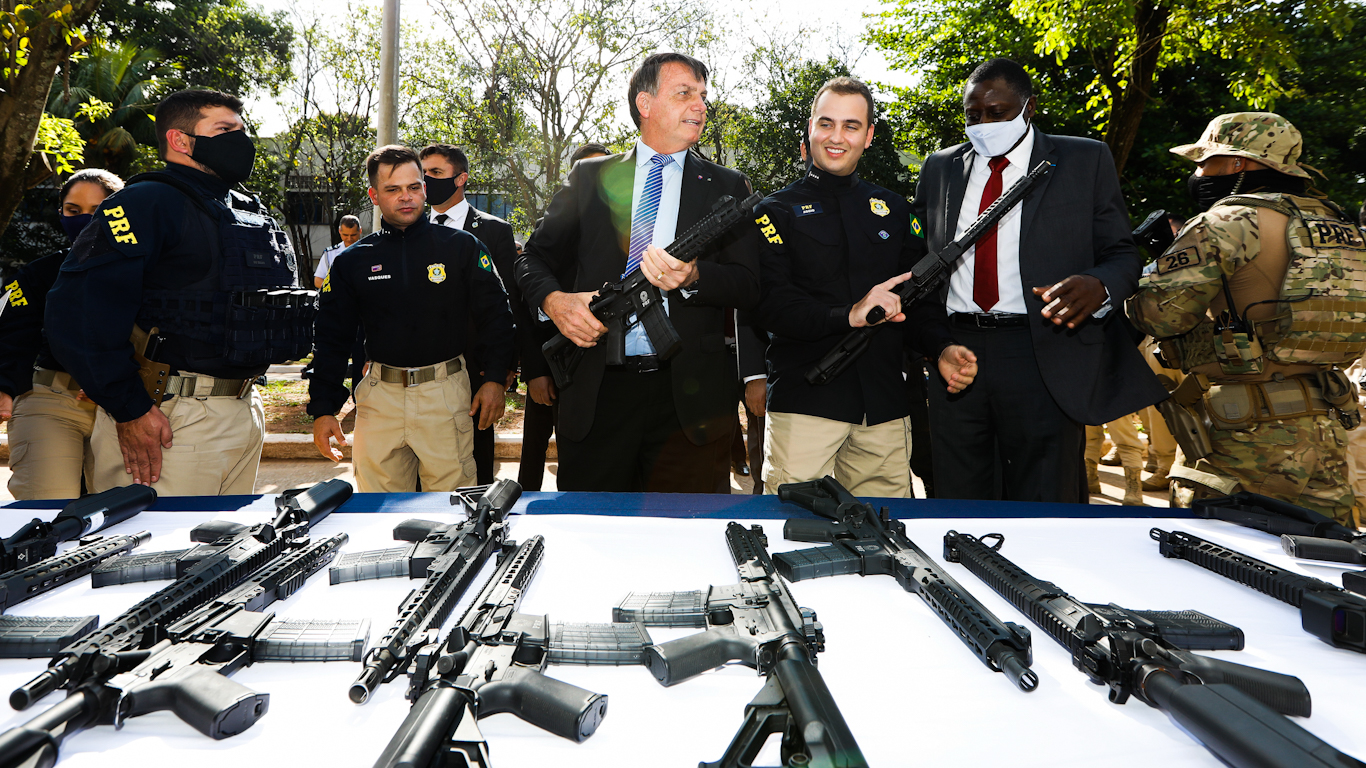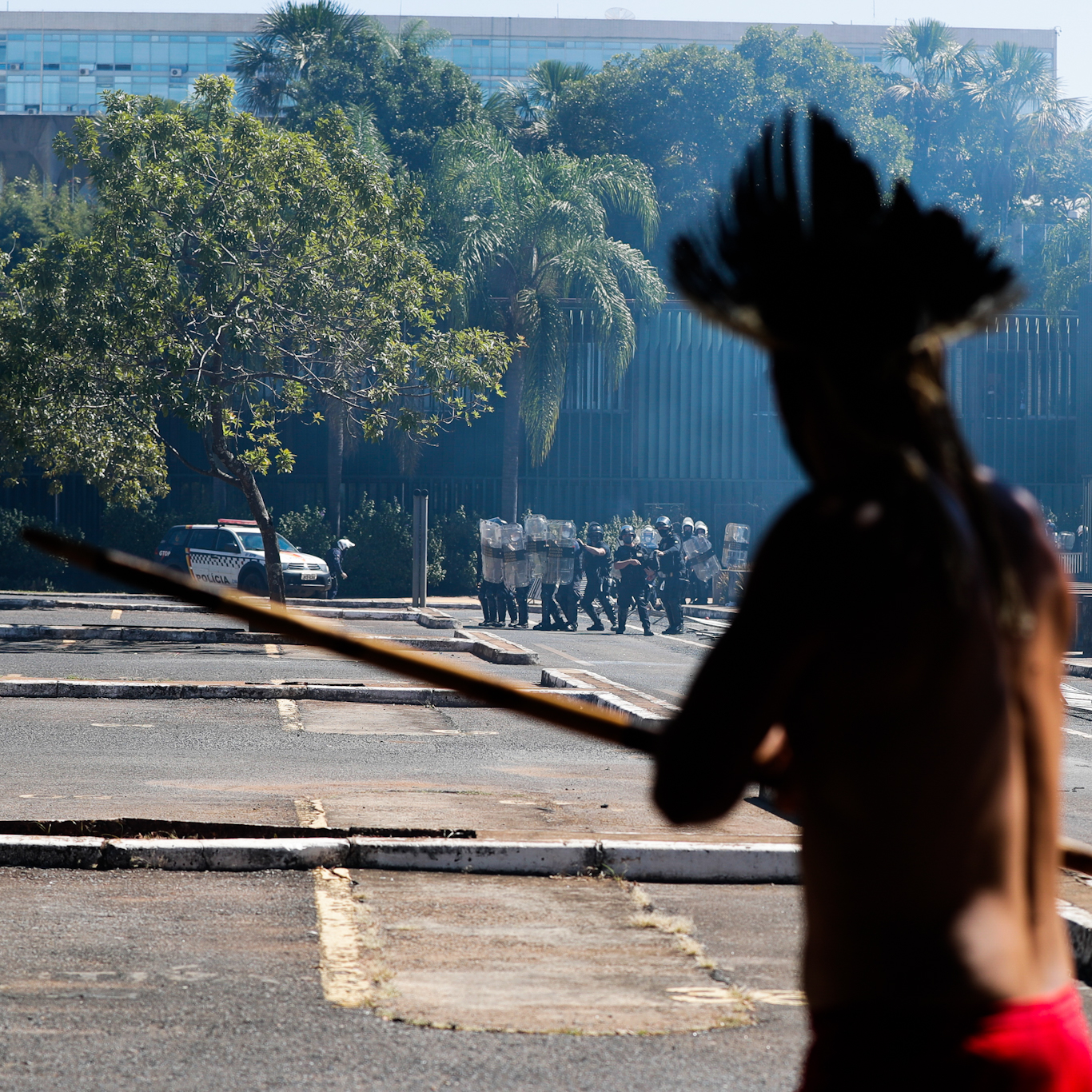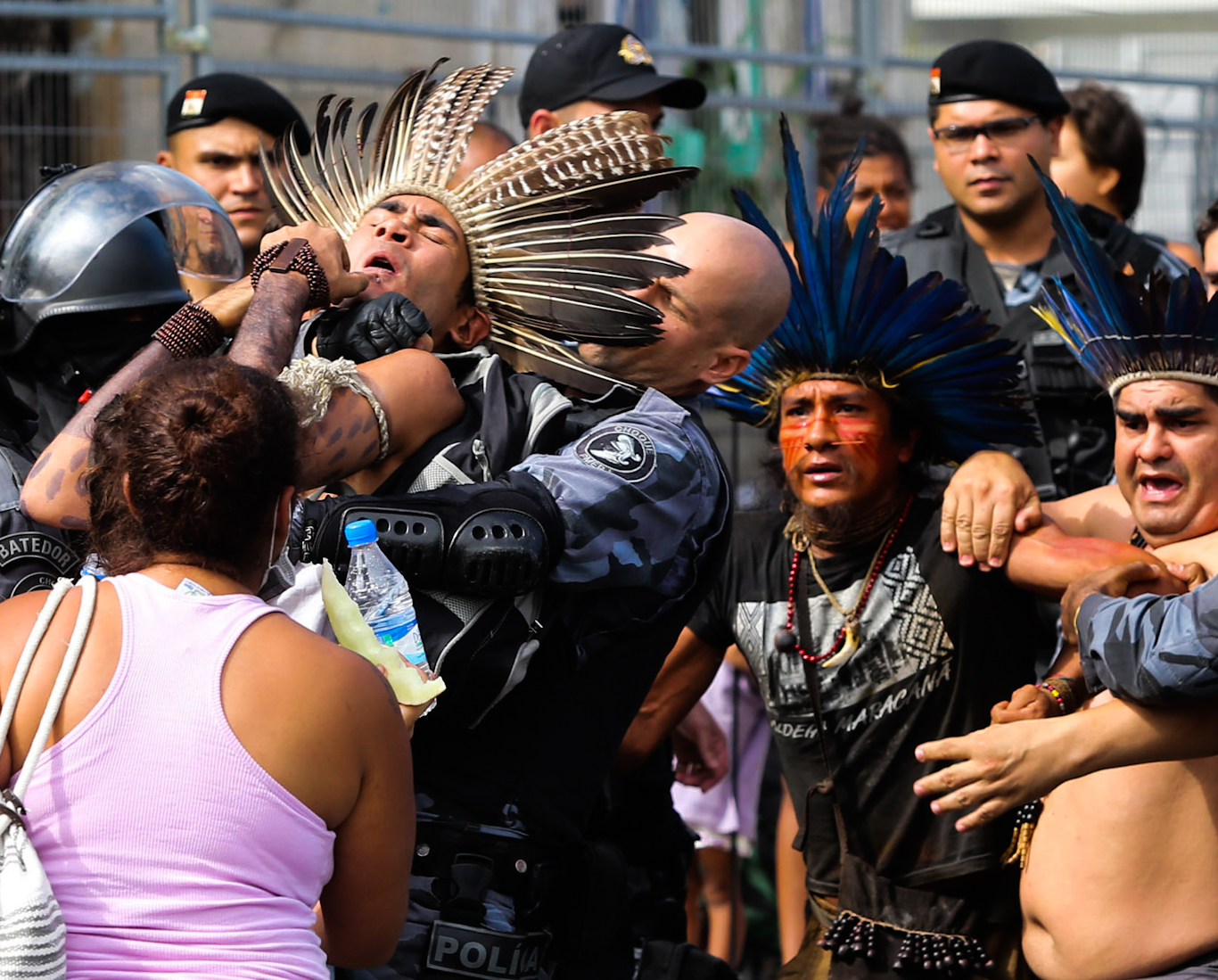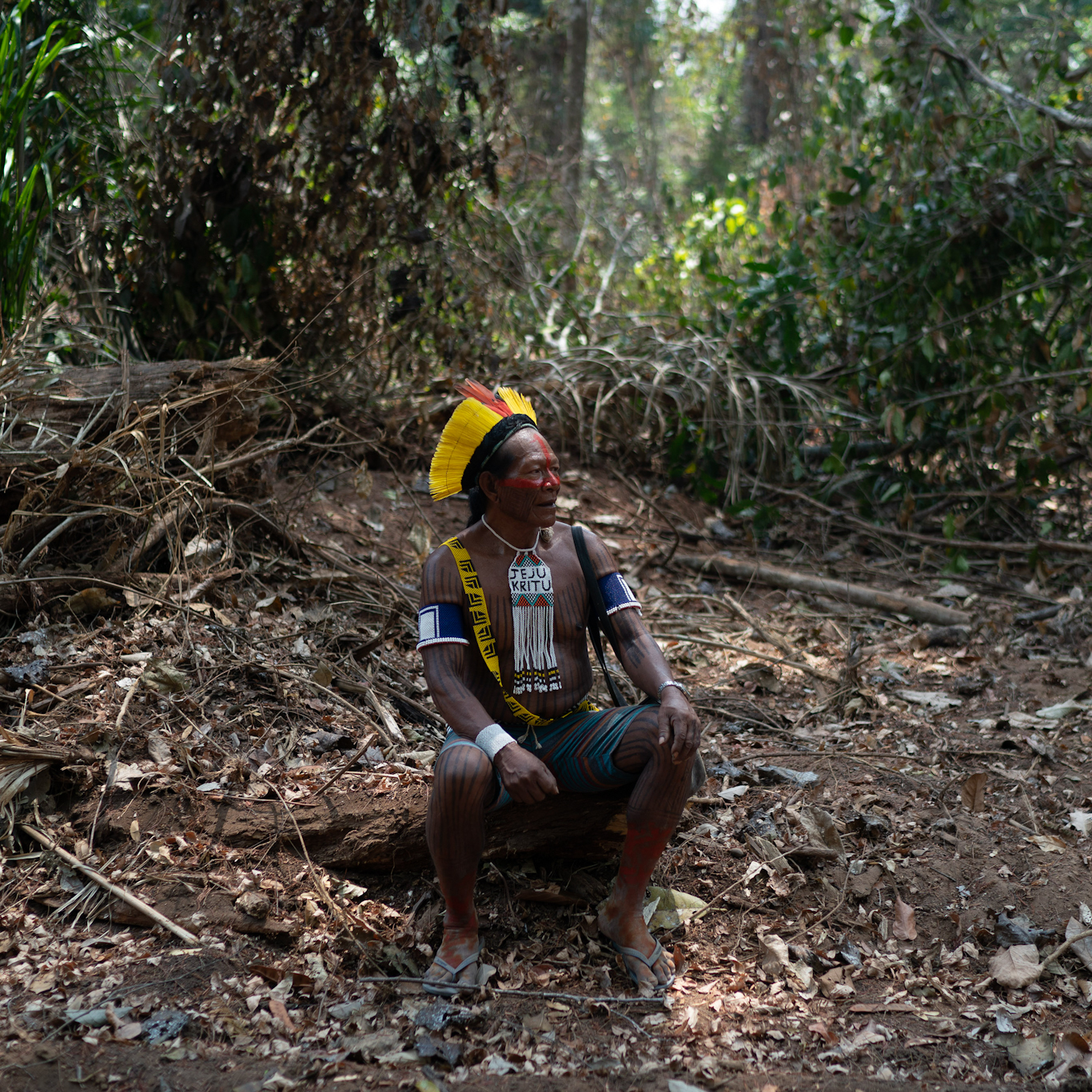Kit Klarenberg
 From April 1964 to March 1985, a military junta ruled Brazil with an iron fist. Its crimes against humanity throughout this period were extensive, including institutionalized torture, imprisonment, forced disappearances and mass murder. Typically, the victims were political opponents of the regime, although the country’s indigenous population was a specific, dedicated target.
From April 1964 to March 1985, a military junta ruled Brazil with an iron fist. Its crimes against humanity throughout this period were extensive, including institutionalized torture, imprisonment, forced disappearances and mass murder. Typically, the victims were political opponents of the regime, although the country’s indigenous population was a specific, dedicated target.
In most cases, their crime was objecting to economic “reform” projects that destroyed their homes or simply living in the wrong place at the wrong time. With the backing and direction of the World Bank, the junta forcibly displaced indigenous people and desecrated their lands to extract valuable natural resources for Western capital. Along the way, these communities routinely endured brutal repression, pogroms, and massacres.
Much of this barbarity was doled out by the Rural Indigenous Guard, a lethal elite police force covertly created by the CIA. The Agency also constructed a system of indigenous prisons, which played a pivotal and horrifying role in the junta’s policies of indigenous cleansing.
In 1988, Brazil peacefully returned to democracy, adopting a new constitution that remains in force today. This constitution acknowledges the right of indigenous peoples to preserve and safeguard their rich cultural heritage and to maintain exclusive ownership of “traditional lands.” While challenges persisted, their situation gradually improved, particularly during the initial terms in office of left-wing President Luiz Inácio Lula da Silva from 2003 to 2010.
However, as a July report from Conselho Indigenista Missionário (Indigenous Missionary Council – CIMI) makes disturbingly clear, four years of far-right President Jair Bolsonaro’s rule undid decades of modest advancements and progress on indigenous rights and protections in the most grotesque manner imaginable.
CIMI found Bolsonaro’s 2019 – 2022 term was characterized by unrelenting violations of these communities’ rights and a deliberate dismantling of legal, regulatory, and welfare safeguards. This callousness precipitated a shocking upsurge in acts of violence perpetrated against indigenous people by state and non-state actors.
There are compelling reasons to believe this abrupt regression was neither incidental nor a mere reflection of Bolsonaro’s shameless disregard for human rights and the rule of law. The President’s rise to power was primarily owed to Operation Lava Jato, a lawfare conspiracy orchestrated by U.S. intelligence, known outside of Brazil as “Operation Car Wash,” that successfully dragged Brazil back to its submissive and tumultuous Cold War-era state. An era in which the CIA ran roughshod over Latin American sovereignty. An obvious question then arises. Did the CIA direct Bolsonaro’s ruthless crackdown on indigenous communities?
‘IMMINENT GENOCIDE’
According to Brazil’s 2022 census, 1,693,535 Brazilians identify as indigenous, representing 304 distinct ethnic groups and speaking a collective 274 languages. Additionally, the country is home to an astounding 67 uncontacted tribes, marking the world’s most concentrated population in this category. The survival of so many indigenous groups is remarkable, considering the devastating impact of diseases brought during European colonization that decimated native populations. Throughout history, they have endured enslavement, various forms of abuse, and mass atrocities.
CIMI’s report makes clear these grave crimes initiated by Bolansaro remain a daily reality for Brazil’s indigenous communities in the present. Each year during Bolsonaro’s tenure, the number and frequency of abuses grew dramatically. Yet his last in office was particularly blood spattered.
Throughout 2022, the organization recorded 29 cases of abuse of power by Brazilian authorities against indigenous communities, 180 assassinations, 28 attempted murders, 17 “wrongful deaths,” 17 aggravated assaults, 38 instances of ethnic-cultural racism and discrimination, and 20 cases of sexual violence.
Overall, a total of 416 incidents of violence targeting indigenous individuals were documented in 2022, a significant increase from the average of 374 cases recorded over the preceding three years. By comparison, during Dilma Rousseff’s tenure from January 2011 to August 2016, this number stood at 242. Disturbingly, instances of abuses of power exhibited a more than twofold surge each year.
This exponential escalation was sadly predictable. As CIMI’s records attest, Bolsonaro orchestrated a comprehensive alignment of the country’s administrative, judicial, and state entities against its indigenous population. This sweeping effort even encompassed the National Foundation for Indigenous Peoples (FUNAI).
The government failed to fulfill several legal mandates concerning the official demarcation and acknowledgment of the rightful borders of indigenous lands. The courts, tainted by political considerations, consistently rendered verdicts that undermined the rights of indigenous communities. Environmental safeguards were callously disregarded, leading to a deliberate dismantling of the Amazon’s ecological protections.

This region, home to 400 indigenous tribes, saw deforestation soar to its highest levels in 15 years in 2021. When wildfires ravaged the area in 2019, Bolsonaro callously declined millions of dollars in aid from the G7, citing an affront to Brazilian sovereignty as his rationale.
Bolsonaro eagerly sacrificed indigenous people’s safety, rights, legal protections, lands, and lives for the profit of major agricultural and mining corporations, most of whom were foreign. Entire police forces were transformed into “private security” for Western businesses in the process, CIMI argues.
This rampant, state-approved discrimination and abuse emboldened local criminal elements, who seized the opportunity to increase illegal wood logging, mining, hunting and fishing operations in indigenous regions and steal their territory and property with legal impunity.
As a result of this full-spectrum assault, indigenous child mortality in Brazil has ratcheted. CIMI’s “partial information” suggests 835 deaths of children up to four years old in 2022 alone. In other cases, indigenous children were murdered by private militias. One morning in May, 12 heavily armed men swooped on a contested Pataxó village, blitzing the site with gunfire and tear gas for ten minutes. Among the casualties was a 14-year-old local, fatally shot in the back of the head as he attempted to flee.
Elsewhere, the murder of an indigenous 18-year-old at the Taquaperi Indigenous Reserve motivated locals to recapture land recently stolen from them by criminal farmers. Yet, the thieves struck back even harder, with the active assistance of local police, who evicted many residents at gunpoint, then razed their homes. So vicious was the attack that natives refer to it as the “Guapoy Massacre.”
Bolsonaro’s ejection from high office does not mean the reign of terror he instigated is over. Presently, FUNAI does not recognize 86 of the 117 groups of isolated indigenous communities monitored by CIMI as indigenous people, let alone their constitutionally afforded legal and regulatory protections.
“Those groups are effectively invisible to the state, as is all the violence that they are subject to, including the risk of imminent genocide,” the report grimly warns.
ANATOMY OF A COUP
In 2012, Brazil’s federal government created the National Truth Commission to investigate political crimes committed by the junta. It rapidly became clear that the number of indigenous people killed during the military government’s 20-year rule was at least 20 times greater than historical estimates. As noted, the CIA-created Rural Indigenous Guard was primarily responsible.
In service of this carnage, the Guard’s operatives received extensive training in CIA torture techniques and a variety of weapons and vehicles used in genocidal “raids” on indigenous territory during the late 1970s. This included bombing campaigns. Often, the lethal load was CIA-supplied napalm, dropped on residents of the Amazon and elsewhere to drive them from their lands and make way for new highways and other industrialization. Thousands were killed, many more scarred for life by chemical burns.
Was the CIA, along with major Western corporations and investors, again directing and expediting the slaughter and displacement of indigenous communities under Bolsonaro? He visited CIA headquarters and repeatedly met with high-ranking Agency officials throughout his Presidency. Yet, there are even more compelling grounds to view the state-sanctioned, encouraged and facilitated genocide of indigenous people under his rule as a 21st-century continuation of the CIA’s Cold War campaign of mass destruction against these communities.
Bolsonaro became President as an explicit result of Operação Lava Jato (Operation Car Wash). Publicly presented as a crusading anti-corruption effort heralding a new dawn in Brazil, in which democracy and the rule of law reigned supreme, in reality, it was a fraud directed by the CIA, FBI, and U.S. Department of Justice. The objective was to destroy the country’s most profitable companies and prevent the left from retaking power.
The Presidencies of Lula and Rousseff divorced Brasilia from Washington’s grasp and made the country a major player regionally and increasingly internationally. Brazil was widely perceived to be a global power of the future, pursuing a very different model of growth and development than that enforced by the U.S. empire. Its biggest companies used portions of their immense profits to fund social programs and development projects for the benefit of all.

The need to put a decisive stop to all this was pronounced from Washington’s perspective. Lava Jato provided a highly effective means of achieving that malign end behind a public chimera of radical reform and positive change. Revealingly, when Lula was jailed on bogus corruption charges in July 2017, the Operation’s lead prosecutor dubbed his incarceration “a gift from the CIA” in private Telegram chats, subsequently leaked to The Intercept.
Lula’s imprisonment prevented him from running in the 2018 Presidential election. When he was released in November 2019, vast swaths of Brazil’s previously booming economy had been ravaged. All construction in the country was paralyzed, while millions of jobs and tax revenues had been lost, causing the country’s GDP to contract by at least 3.6%.
The Operation’s economic and political destruction wasn’t restricted to Brazil. In March 2021, Lula observed: “The criminalization of [our] engineering companies also had a regional impact that contributed to conservative political changes in other Latin American and Caribbean countries.” Lava Jato was a seismic CIA depth charge concerned with dragging the region back to its Cold War position – impoverished, authoritarian, and easily exploitable by the U.S. government. It was inevitable that indigenous communities would concomitantly suffer.
HOPE AT LAST
Brazil’s National Truth Commission completed work in 2014. Its findings confirmed that the ruling military junta was guilty of industrial-scale human rights violations, including arbitrary imprisonment, forced disappearances, rape, torture, and murder. Such was the scale of abuse doled out to indigenous communities that the commission recommended the creation of a standalone National Indigenous Truth Commission to investigate further how they suffered under CIA-backed dictatorship and reparations in the form of regularization of their lands.
Neither has materialized in the years since, although they may now do with Lula’s return to the Presidency. Immediately upon being sworn in for the third time this January, he started reversing his predecessor’s policies in many areas, particularly concerning the environment.
In April, he signed a decree recognizing six new indigenous reserves while banning mining and restricting commercial farming in those lands, which includes a vast swath of Amazon rainforest.

“We are going to legalize indigenous lands. It is a process that takes a little while because it has to go through many hands,” Lula further pledged. “I don’t want any indigenous territory left without demarcation during my government. That is the commitment I made to you.”
It will take more than a “little while” for the full extent of Lava Jato’s cataclysmic impacts to be reversed. Lula’s re-election is an encouraging development, but the CIA stands ever-ready to kill any chance of hope for the region and its people – particularly embattled indigenous communities.
That many decades in the making, genocide came so close to being completed under Bolsonaro, the Agency surely can’t give up now.
Feature photo | Then-Braizlian-President Jair Bolsonaro holds a rifle during the delivery of weapons to Federal Police in Rio de Janeiro, September 2020. Carolina Antunes | PR
Kit Klarenberg is an investigative journalist and MintPresss News contributor exploring the role of intelligence services in shaping politics and perceptions. His work has previously appeared in The Cradle, Declassified UK, and Grayzone. Follow him on Twitter @KitKlarenberg.